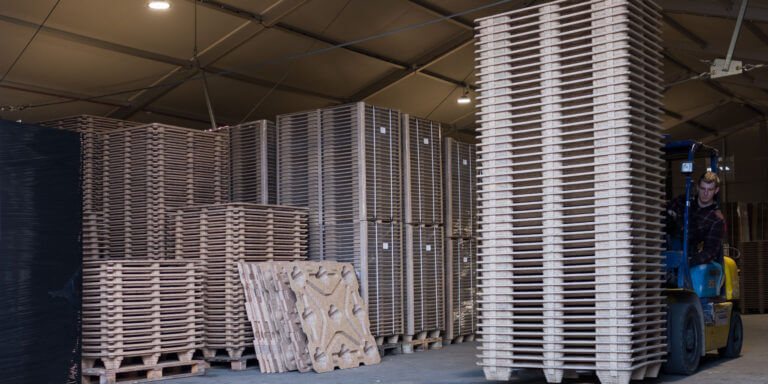New rules for the purchase of wood raw material in 2025 - challenges and opportunities for the pallet industry
The reduction in wood availability in 2025 brings with it a number of challenges and consequences for both the timber industry and its customers.
The reduction of wood supply by 2 million cubic meters and the introduction of new rules for purchasing raw material will affect companies’ cost structures, production processes and market relations.
Announced reduction in wood availability in 2025
The year 2025 will bring changes in the availability of raw timber.
The National Forest Service has announced that the amount of available wood will decrease by 2 million cubic meters compared to 2024, which means about a 5% decrease in supply.
In addition to this, new timber purchasing rules will be introduced, which will affect companies operating in the industry.
For the timber industry and companies that use wood, such as BosPal, this means adjusting to the new reality.
Higher wood prices and limited availability of raw material could affect production costs, as well as the price of finished products such as pallets.
In the face of these challenges, BosPal’s pressed wood pallet technology provides a significant advantage.
These pallets are not only more environmentally friendly, but also lighter in weight, which directly translates into savings in transportation and storage.
Lighter pallets make it possible to optimize logistics processes, which is crucial with rising transportation costs.
In the face of rising prices for wood raw material and its limited availability, innovative production technologies are becoming essential to improve the operational efficiency of companies.
Modern solutions make it possible not only to reduce wood consumption, but also to make better use of available resources, which increases the flexibility and resilience of enterprises to market changes.
Changing rules for purchasing raw material, including the introduction of additional criteria for evaluating bids, such as geography and depth of processing, will affect where and how companies source wood.
Local processing and a more sustainable approach to production will be rewarded, which is in line with global environmental trends.
Main consequences for the timber industry
- Increase in raw material prices: The limited availability of wood is likely to lead to an increase in its price, which will affect the entire industry, from producers to end customers. Companies that rely on wood raw material for their operations may have to implement price increases for their products to compensate for cost increases.
- Need to optimize resources: Companies will have to look for new ways to make better use of available resources. BosPal’s presswood pallet technology seems to be a good solution. This is because by minimizing the use of raw material, it is possible to increase operational efficiency.
- Innovations in production technology: Changes in wood availability can accelerate the development and implementation of new production technologies that reduce wood consumption. This approach not only minimizes the risks associated with limited resources, but also fits in with global trends related to a more sustainable approach to production.
- Changes to raw material purchasing rules: New criteria for evaluating bids to purchase timber, such as geography and depth of processing, will reward local companies and those that implement more sustainable production processes. Companies will be forced to adapt to these requirements, which may mean changing sourcing strategies and working with local suppliers.
What does this mean for wood customers?
- Price increases for finished products: Reduced wood supply and increased wood prices will affect the prices of products made from wood, such as pallets.
Customers must be prepared for higher costs, which may also affect their own pricing structures and logistics costs. - Greater importance of logistical efficiency: Lighter presswood pallets are an attractive alternative to traditional solutions.
Significantly lower weight allows customers to optimize transportation and storage processes, reducing logistics costs. - Increasing emphasis on green solutions: It will become increasingly important to introduce green solutions in production and logistics processes.
Customers will be more likely to choose products and companies that engage in sustainable production.
This approach will lead to long-term image and competitive advantages.
Final conclusions
Reduced wood availability and the introduction of new rules for the purchase of raw material in 2025 represent a challenge for the pallet industry, but also an opportunity for innovative solutions.
BosPal, with its pressed wood pallet technology, is able to adapt to the new market requirements, while offering business partners the added benefit of the environmental and economic advantages of its products.




